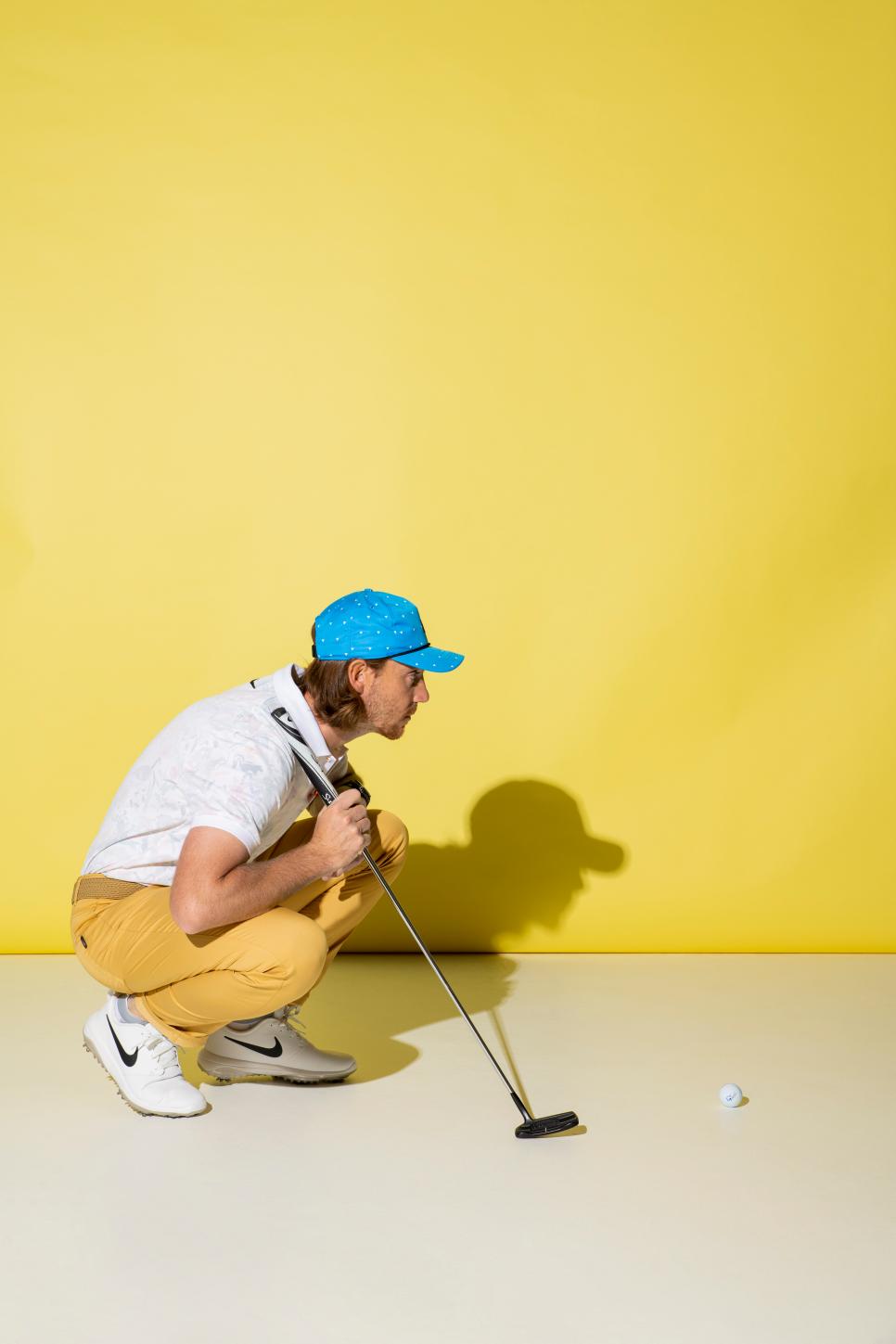Putting
Tommy Fleetwood's secrets to putting

So much of being successful on the greens is what you do before you take the putter back. That’s why Golf Digest asked me to share my pre-putt routine. I’ll also talk to you a bit about my technique, but there are so many styles of grips, stances and strokes, what seems to matter most is having a consistent and effective approach to green-reading.
I use a method called Aim Point. It’s a little complicated to explain how it works in a short article, so I’ll give you a basic understanding of how I figure out the speed and break on every putt. When I step on the green, I use my eyes and feet to detect slope. I’ll walk around the hole, then I’ll get low to the ground—not Spider-Man low like Camilo Villegas—but low enough to see which way the ball is going to move.
But sometimes your eyes can fool you, which is why I try to confirm what I see with my feet. I want to feel where the weight is in my feet; that’s the direction the ball will roll.
Once I have a line picked, I stand behind the line and visualize the ball tracking to the hole on that path. I see the ball moving in real time, which helps me know how big a stroke I need to make. Then I’ll stand to the side of the line I’ve chosen and make a couple of practice strokes while visualizing the ball rolling to the cup. That last bit, standing astride, gives me a nice perception of what’s about to happen. That’s important because if you just visualize behind the ball, things will look off when you set up to putt.
Like most pros, I use a line on my ball to match the line I want the ball to roll on. I set up in a neutral stance, everything as square to the line as possible. It might not be perfect, but it’s never that far off, so don’t worry too much about it. More important is to get the ball started on the line you’ve chosen. I’ll talk more on that in a second.
The last thing is to make a stroke in which the putterhead does the work. That means the length of the stroke is equal on both sides. I try not to vary effort, just length of stroke. I also like to feel free. It’s important to have as few moving parts as possible, but you don’t want to be too rigid. For example, I’ll keep my head down past impact in the stroke, but I don’t resist it pivoting toward the hole.
One more thing I want to say about putting is, you have to be confident. You’re not always going to read the putt right, and you’re not always going to hit it with the proper speed. But if you address the ball strongly believing in what you’re about to do, it makes a difference in execution. So pick a line, judge the speed, and hit the putt. No second-guessing.

.jpg)